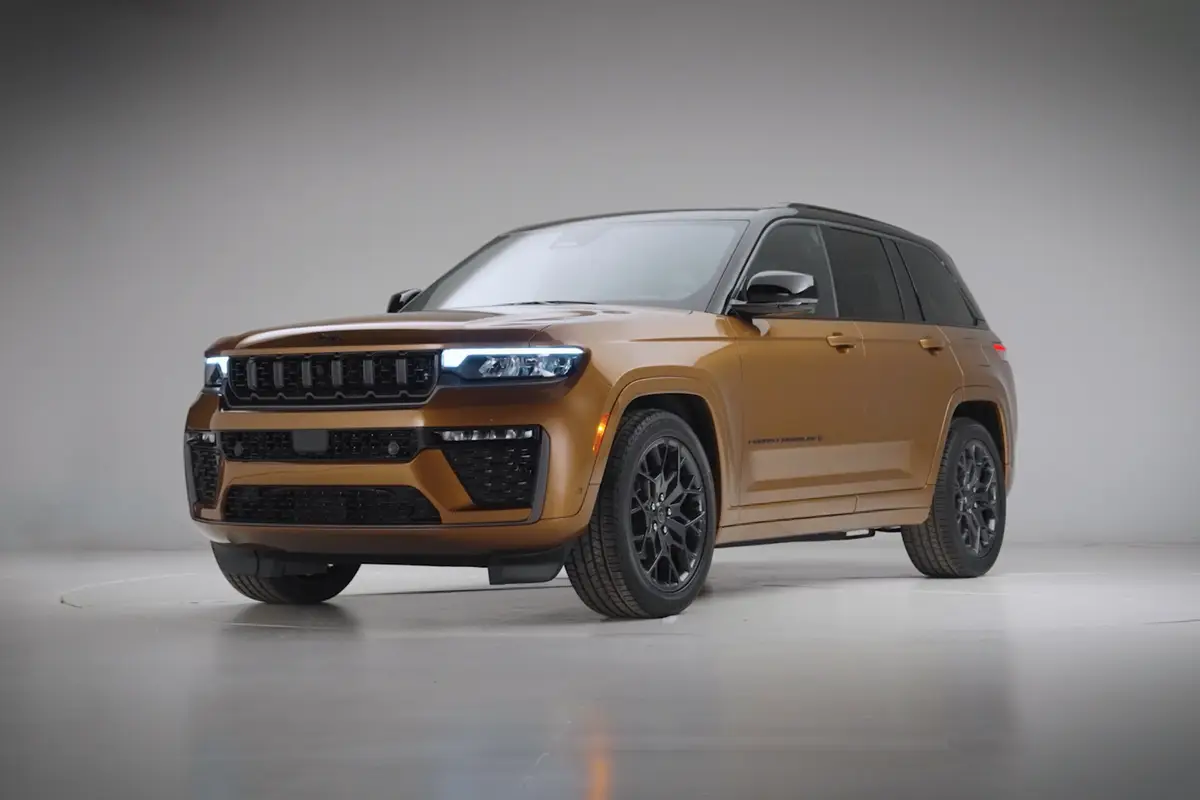2012 Honda Pilot: Car Seat Check


This Car Seat Check was originally published in October 2011 on MotherProof.com.
Honda has softened the Pilot’s harsh corners for the 2012 model year. The three-row SUV’s exterior, interior and powertrain have been updated, and the front-wheel-drive Pilot gets an EPA-estimated 18/25 mpg city/highway. What impressed us most is the Pilot fit all three of our child-safety seats in the second row.
For the Car Seat Check, we use a Graco SnugRide 30 rear-facing infant-safety seat, a Britax Roundabout convertible child-safety seat and Graco high-back TurboBooster seat.
The front seats are adjusted to a comfortable position for a 6-foot driver and a 5-foot-8 passenger. The three child seats are installed in the second row. The booster seat sits behind the driver’s seat, and the infant seat and convertible seats are installed behind the passenger seat. We also install the infant seat in the second row’s middle seat with the booster and convertible in the outboard seats to see if three car seats will fit. If there’s a third row, we install the booster seat and a forward-facing convertible.
Here’s how the 2012 Pilot did in Cars.com’s Car Seat Check:
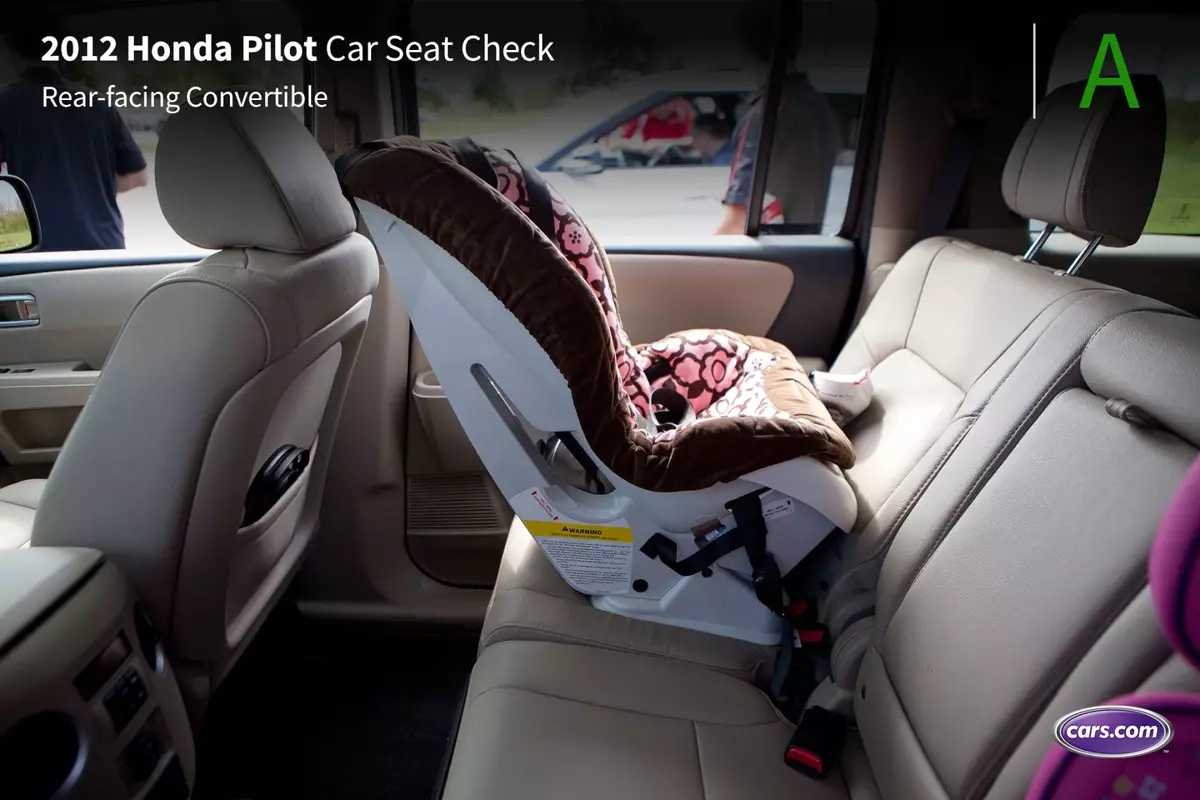
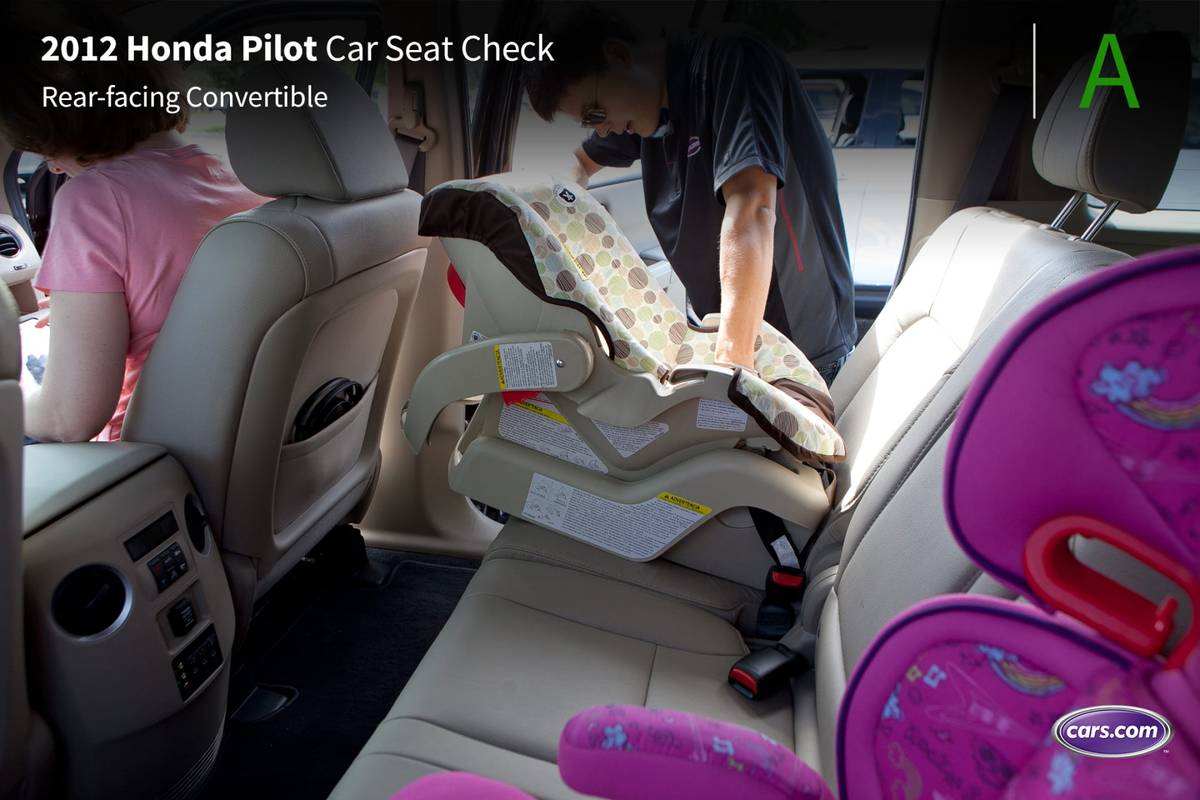
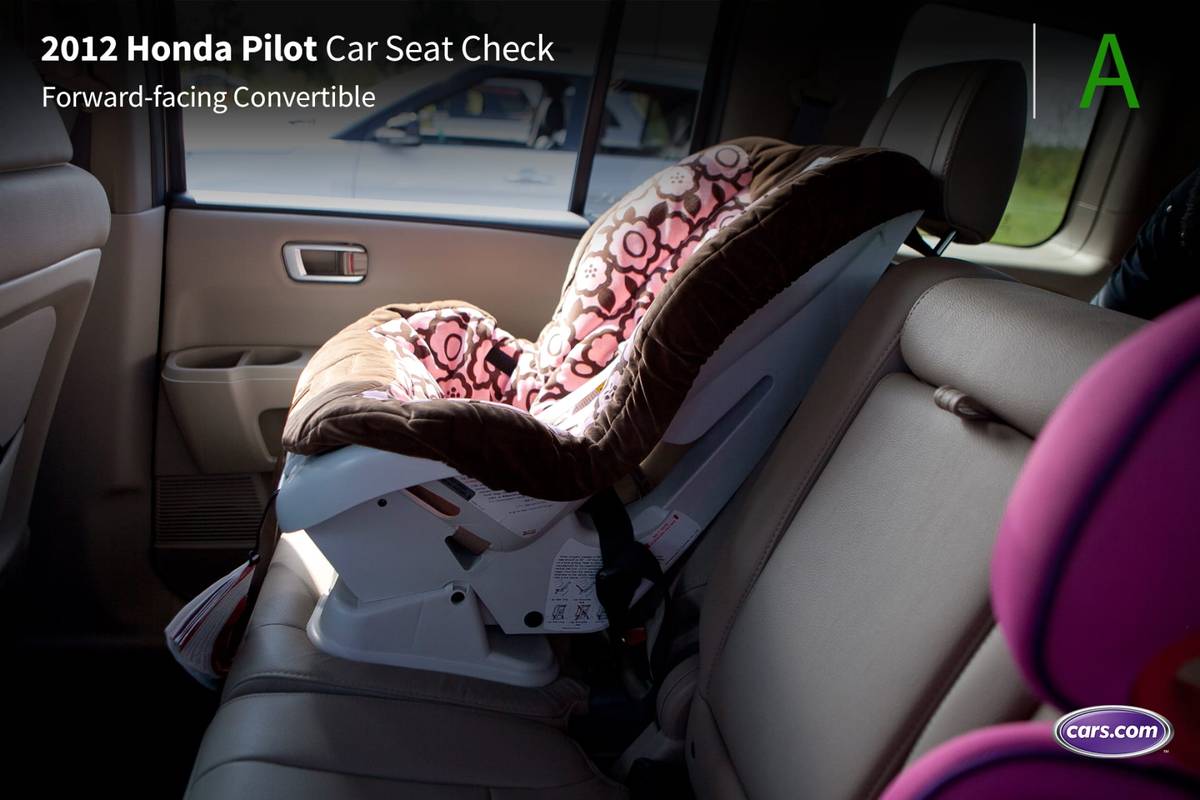
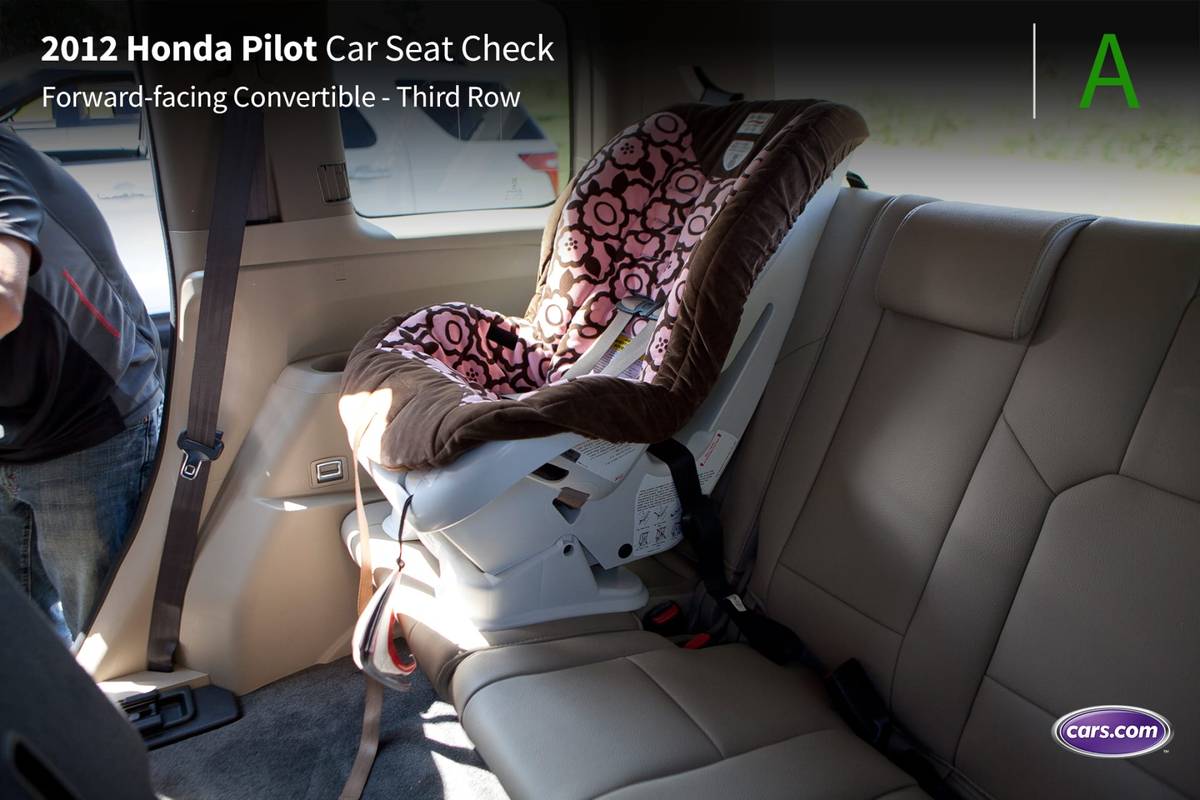
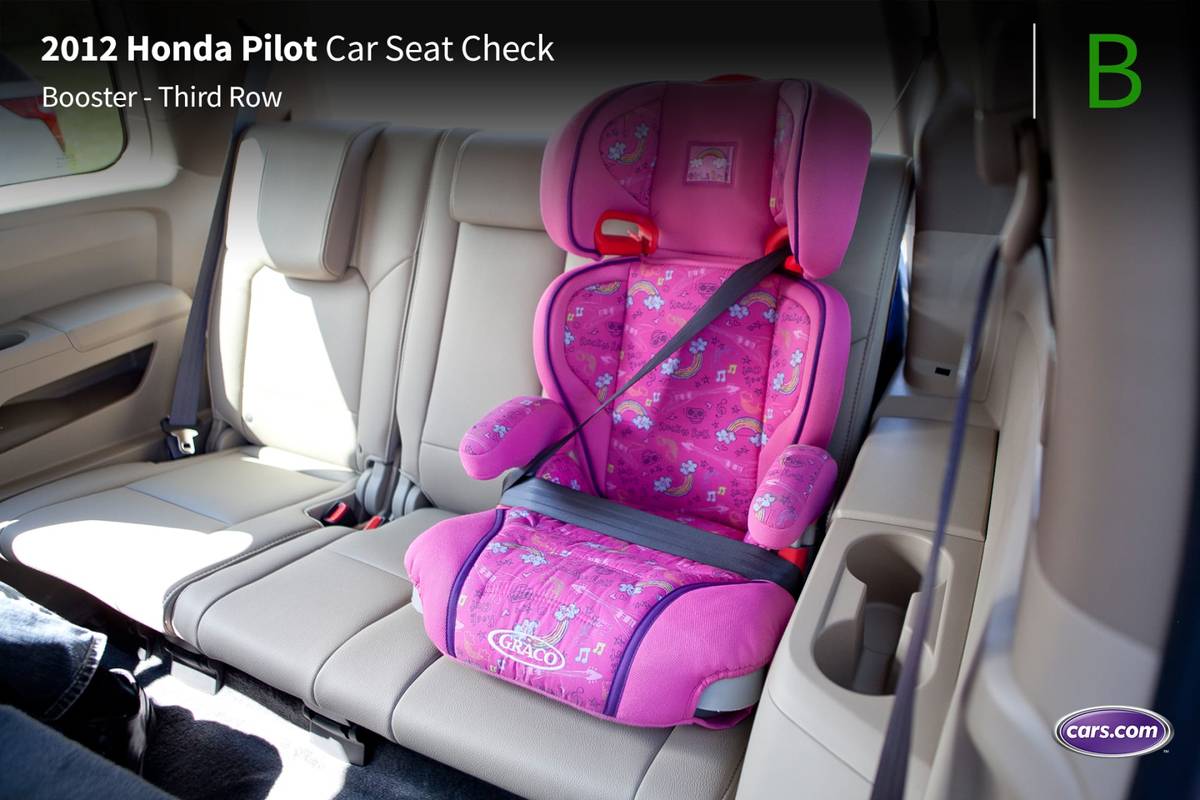
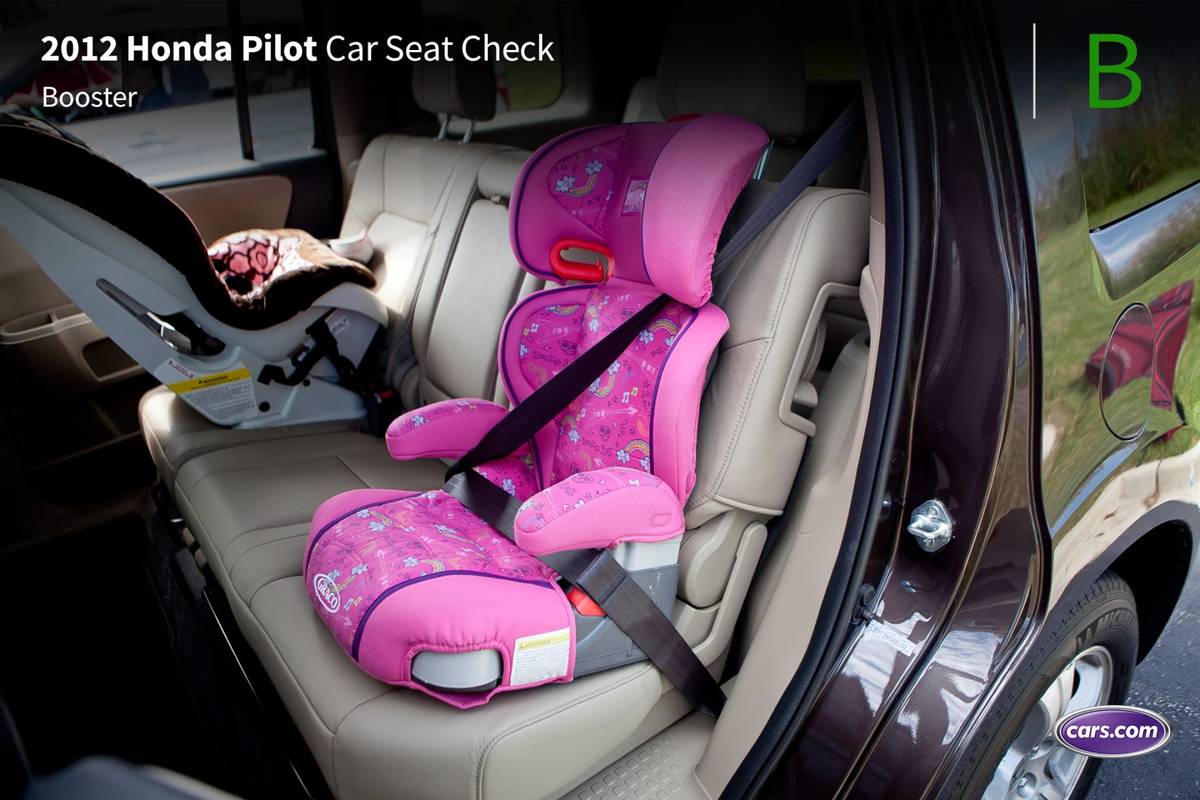
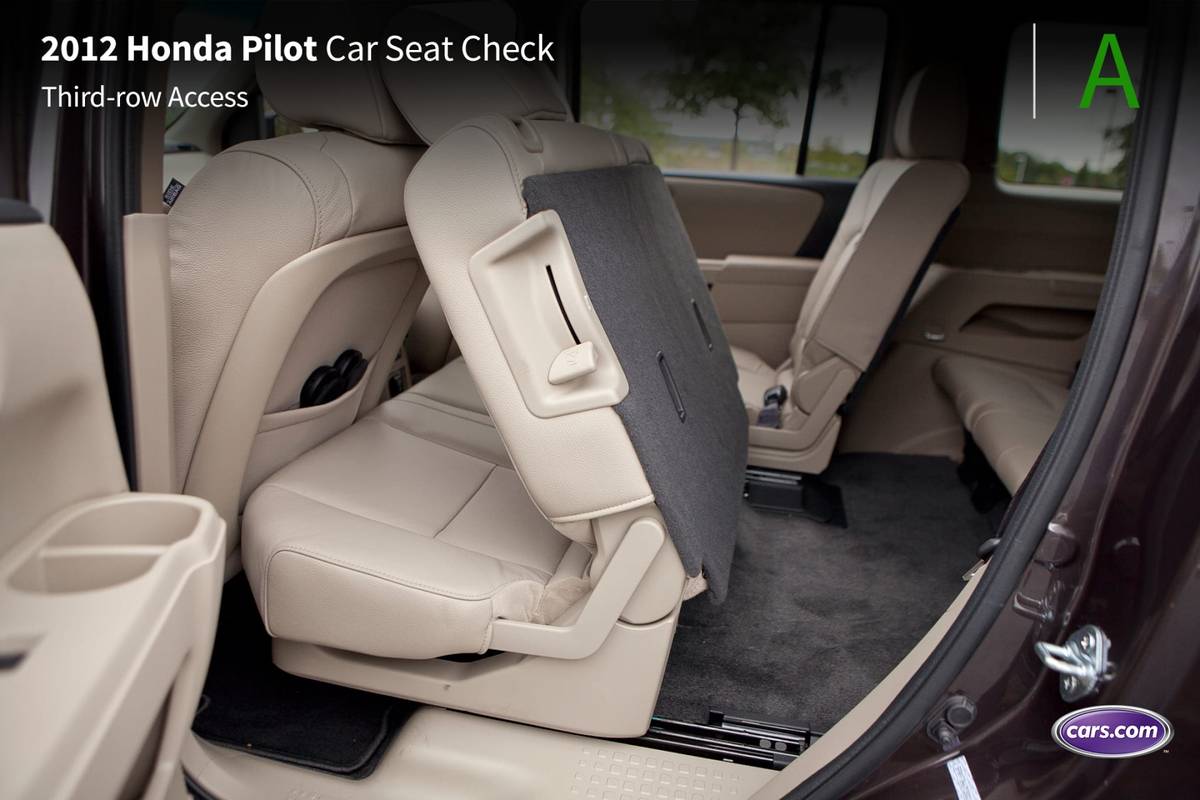







Latch system: In the second row, the Pilot has three sets of lower Latch anchors. Reclining the seatbacks helps expose the anchors, making them a little easier to use. We did have problems with the inboard Latch anchors behind the front passenger seat because there’s a lot of seat hardware that blocks access to the anchor. The second row has three tether anchors that are midway down the seatbacks. They’re easy to use.
There’s one more set of lower Latch anchors in the third row. The anchors, which are on the passenger side, are buried in the seat bight, where the back and bottom cushions meet. There are also three tether anchors in the third row. They’re midway down the seatbacks.
Booster seat: The booster seat fit well in both the second (photo above) and third (photo below) rows. However, we did run into some problems with the seat belts. In the second row, all the seat belt buckles are floppy, making it difficult for kids to buckle up independently.
In the third row, the driver’s side seat belt buckle is floppy. The passenger-side seat belt buckle is stable, but it’s placed too outboard, causing the booster to sit on top of it.
Convertible seat: The forward-facing convertible fit well in both the second and third rows.
The rear-facing convertible also fit well in the second row because the second-row seats slide forward and back, creating more than enough room for this car seat.
Infant-safety seat: This rear-facing car seat also fit well in the second row.
Third-row access: The Pilot’s second row is split 60/40, and the seats slide forward to create a pathway to the third row.
How many car seats fit in the second row? Three easily fit into the second row.
How many car seats fit in third row? Two.
Editor’s note: For three car seats — infant-safety seat, convertible and booster seats — to fit in a car, our criterion is that a child sitting in the booster seat must be able to reach the seat belt buckle. Parents should also remember that they can use the Latch system or a seat belt to install a car seat.

Editor-in-Chief Jennifer Newman is a journalist with more than 25 years of experience, including 15 years as an automotive journalist at Cars.com. Jennifer leads the Editorial team in its mission of helping car shoppers find the vehicle that best fits their life. A mom of two, she’s graduated from kids in car seats to teens behind the steering wheel. She’s also a certified car-seat technician with more than 12 years of experience, as well as member of the World Car Jury, Automotive Press Association and Midwest Automotive Media Association. LinkedIn: https://www.linkedin.com/in/jennilnewman/ Instagram: @jennilnewman
Featured stories
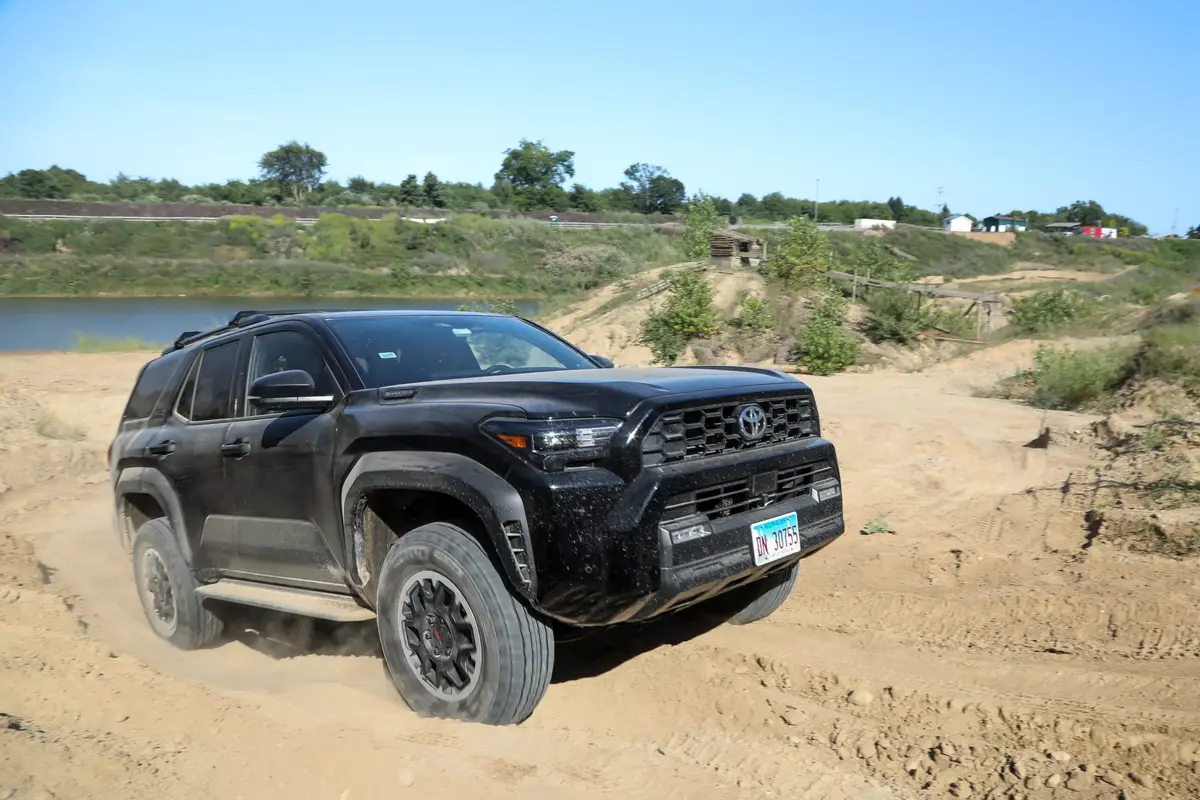
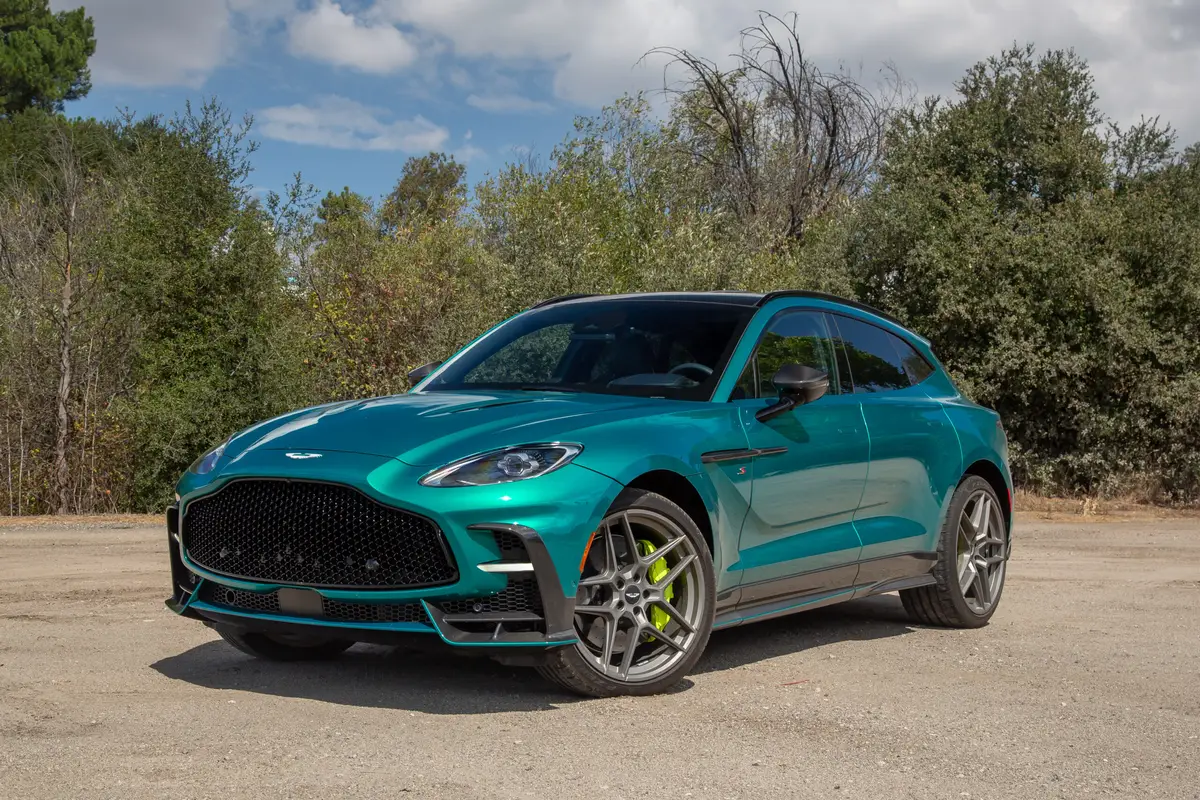
2026 Aston Martin DBX S Review: Excellence in (DB)X S

